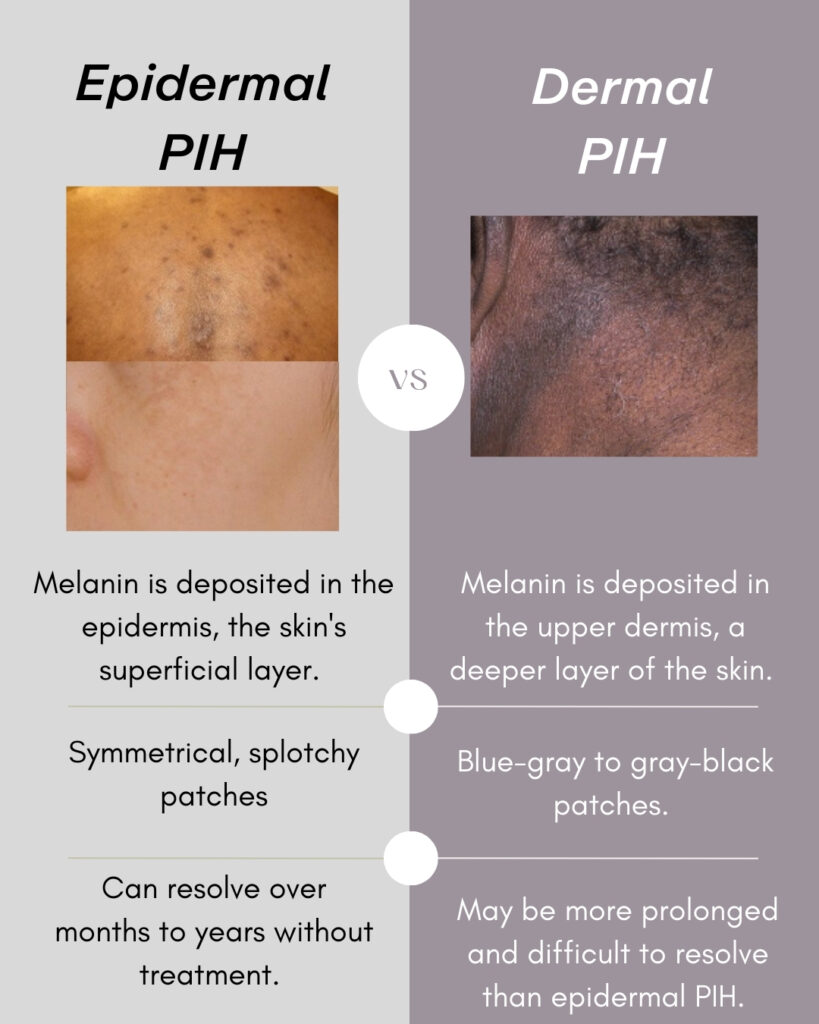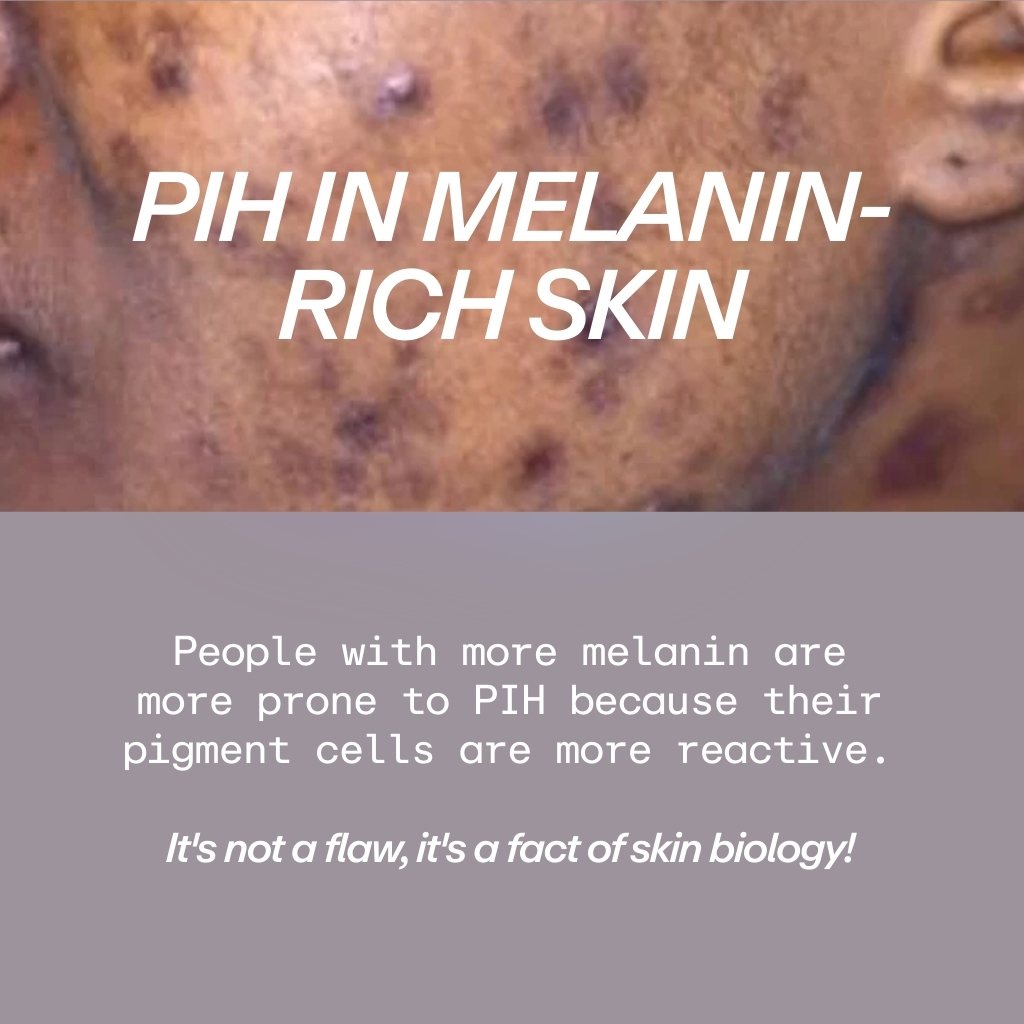Ever had a pimple, bug bite, or scratch that left behind a dark mark that just won’t fade? You’re not alone. This stubborn shadow isn’t a permanent scar; it’s post-inflammatory hyperpigmentation (PIH).
It’s the most common form of discoloration, especially for those with melanin-rich skin. So let’s solve this mystery and arm you with the knowledge to fight back.
Why Does Your Skin Leave a Mark?
Your skin is a hero, and when it’s injured, its first instinct is to heal. But sometimes, in the process, it goes into overdrive.
When inflammation strikes from a breakout, rash, or even a laser treatment, your skin’s pigment-producing cells—melanocytes—get a signal to go into panic mode.
They release a flood of melanin, the very same pigment that gives your skin its beautiful color. This excess melanin gets deposited in the skin, leaving that frustrating dark spot behind.

The key to treating these marks lies in understanding their depth.
- Epidermal PIH: If the mark is brown, it’s sitting in the top layer of your skin. These spots are the easiest to treat because they’ll naturally shed over time as your skin cells turn over. Think of it as a temporary tattoo you can help fade away.
- Dermal PIH: If the mark has a blue-gray or grayish appearance, it has sunk deeper into your skin’s dermal layer. This is where it gets more complicated. Once pigment is this deep, it won’t shed easily, and topical products may not be enough to make a significant difference.
PIH and Melanin-Rich Skin - It's not a flaw

PIH is particularly common and often more pronounced in individuals with melanin-rich skin.
This isn’t a flaw; it’s a matter of skin biology. Melanin-producing cells in darker skin tones are naturally larger and more reactive to inflammation.
This means that any injury or inflammatory event—from a simple acne lesion to a bug bite—is more likely to trigger an overproduction of melanin, resulting in more noticeable and persistent hyperpigmentation.
Understanding this heightened reactivity is the first step toward effective prevention and treatment.
At Skin 2000, we don't just talk about problems; we provide solutions.
Want to learn more? Stay tuned for our next post where we’ll discuss how to tackle PIH.
